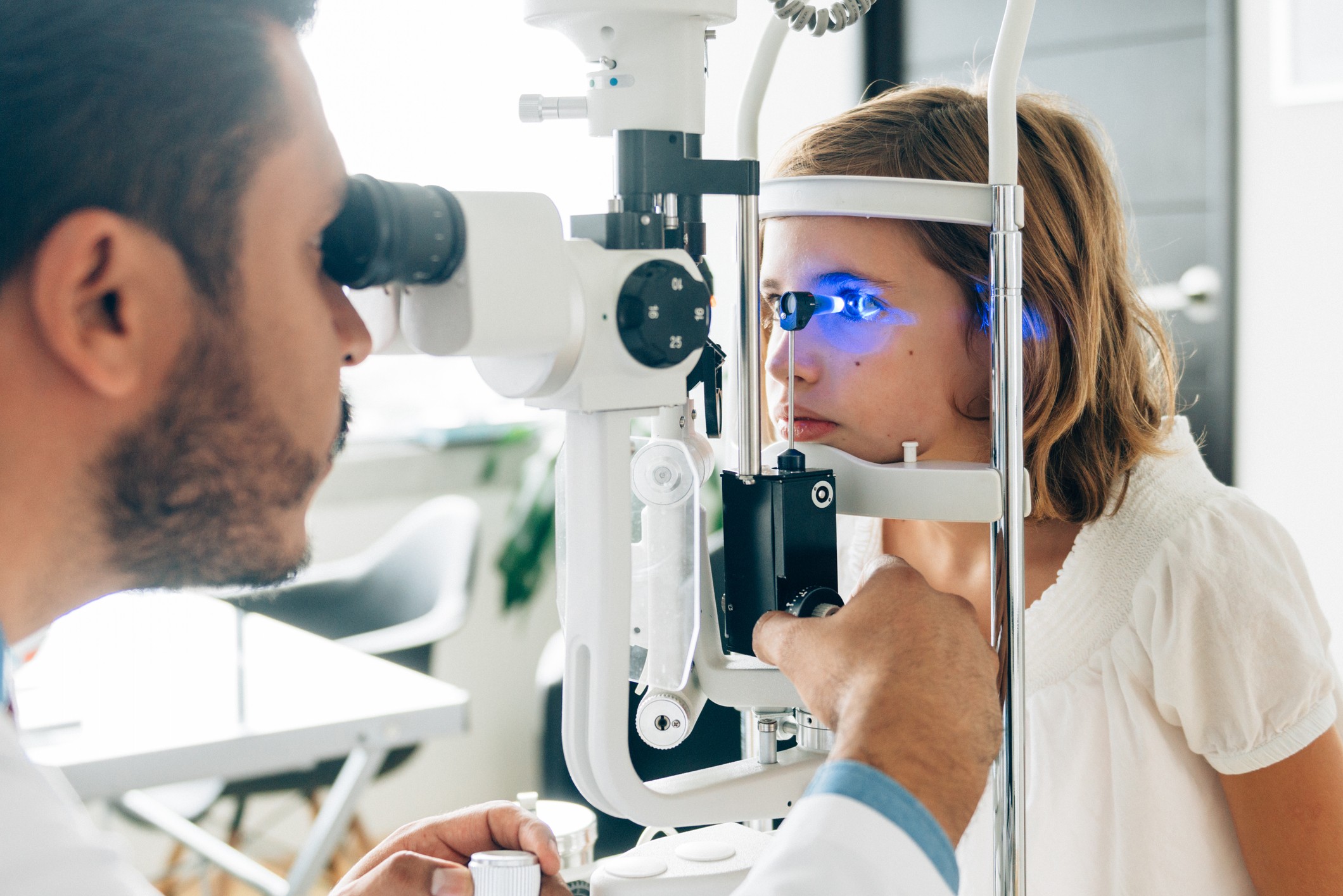In 2015 (the most recent data available), a total of 1.02 million people in the United States were blind, and approximately 3.22 million people had vision impairment, as defined by the best-corrected visual acuity in the better-seeing eye. In addition, 8.2 million people had vision impairment due to uncorrected refractive error. By 2050, the numbers of these conditions are projected to double. The leading causes of blindness and low vision in the United States are primarily age-related eye diseases, such as age-related macular degeneration, cataract, diabetic retinopathy, and glaucoma. Other common eye disorders include amblyopia and strabismus.
The leading causes of blindness and low vision in the United States are primarily age-related eye diseases such as age-related macular degeneration, cataract, diabetic retinopathy, and glaucoma. Other common eye disorders include amblyopia and strabismus.
Refractive errors are the most frequent eye problems in the United States. Refractive errors include: myopia (nearsightedness), hyperopia (farsightedness), astigmatism (distorted vision at all distances), and presbyopia that occurs between ages 40–50 years (loss of the ability to focus up close, inability to read letters of the phone book, or the need to hold a newspaper farther away to see clearly). Refractive errors can be corrected by eyeglasses, contact lenses, or in some cases, surgery. Recent studies conducted by the National Eye Institute showed that proper refractive correction could improve vision among 11 million Americans aged 12 years and older.
Learn more about refractive errors.
Macular degeneration, often called age-related macular degeneration, is an eye disorder associated with aging that results in damage to central and sharp vision.
Central vision is needed for seeing objects clearly and for common daily tasks such as reading and driving. Age-related macular degeneration affects the macula, the central part the retina that allows the eye to see fine details. There are two forms of age-related macular degeneration: wet and dry.
Wet age-related macular degeneration is when abnormal blood vessels behind the retina start to grow under the macula, ultimately leading to blood and fluid leakage. Bleeding, leaking, and scarring from these blood vessels causes damage and leads to rapid central vision loss. An early symptom of wet age-related macular degeneration is that straight lines appear wavy.
Dry age-related macular degeneration is when the macula thins overtime as part of the aging process, gradually blurring central vision. The dry form is more common, accounting for 70–90% of cases, and the condition progresses more slowly than the wet form. Over time, as less of the macula functions, central vision is gradually lost in the affected eye. Dry age-related macular degeneration generally affects both eyes. One of the most common early signs of dry age-related macular degeneration is drusen (yellow deposits under the retina).
Learn more about age-related macular degeneration.
Cataract is a clouding of the eye’s lens. The condition is the leading cause of blindness worldwide, and the leading cause of vision loss in the United States. Cataracts can occur at any age due to a variety of causes and can be present at birth. Although treatment for the removal of cataracts is widely available, access barriers (e.g., lack of insurance coverage, treatment costs) and lack of awareness prevent many people from seeking and receiving the proper treatment.
An estimated 20.5 million (17.2%) Americans aged 40 years and older have a cataract in one or both eyes, and 6.1 million (5.1%) have had their lens removed operatively. The total number of people who have cataracts is estimated to increase to 30.1 million by 2020.
Learn more about cataracts.
Diabetic retinopathy is a common complication of diabetes. It is the leading cause of blindness in American adults and is characterized by progressive damage to the blood vessels of the retina, the light-sensitive tissue at the back of the eye that is necessary for good vision.
Diabetic retinopathy progresses through four stages: mild nonproliferative retinopathy (microaneurysms), moderate nonproliferative retinopathy (blockage in some retinal vessels), severe nonproliferative retinopathy (blockage in many retinal vessels leading to the retina being deprived of blood supply and causing the growth of new, weaker blood vessels), and proliferative retinopathy (most advanced stage). Diabetic retinopathy usually affects both eyes.
The risk of diabetic retinopathy can be reduced through diabetes management that includes good control of blood sugar, blood pressure, and lipid abnormalities. Early diagnosis of diabetic retinopathy and timely treatment reduce the risk of vision loss; however, as many as 50% of patients with diabetes are not getting their eyes examined or are diagnosed too late for treatment to be effective.
Diabetic retinopathy is the leading cause of blindness among U.S. adults aged 20–74 years. An estimated 4.1 million and 899,000 Americans are affected by retinopathy and vision-threatening retinopathy, respectively.
Learn more about diabetic retinopathy.
Glaucoma is a group of diseases that can damage the eye’s optic nerve and result in vision loss and blindness. Glaucoma occurs when normal fluid pressure inside the eyes slowly rises. However, recent findings now show that glaucoma can occur with normal eye pressure. With early treatment, the eyes often can be protected against serious vision loss.
There are two major categories of glaucoma – “open angle” and “closed angle” glaucoma. Open angle glaucoma is a chronic condition that progresses slowly over a long period of time without the person noticing vision loss until the disease is very advanced. For this reason, open angle glaucoma is called the “sneak thief of sight.” Angle closure, which can damage the optic nerve, can appear suddenly and is painful. Vision loss can progress quickly, however, the pain and discomfort can lead patients to seek medical attention before permanent damage occurs.
Learn more about Glaucoma.
Amblyopia, also referred to as “lazy eye,” is the most common cause of vision impairment in children. Amblyopia is the medical term used when vision in one of the eyes is reduced because the eye and the brain are not working together properly. The eye, itself, looks normal, but it is not being used normally because the brain is favoring the other eye. Conditions leading to amblyopia include: strabismus, an imbalance in the positioning of the two eyes; being more nearsighted, farsighted, or astigmatic in one eye than the other eye; and rarely, other eye conditions such as cataract.
Unless successfully treated in early childhood, amblyopia usually persists into adulthood and is the most common cause of permanent one-eye vision impairment among children and young and middle-aged adults. An estimated 2%–3% of the population suffers from amblyopia.
Learn more about amblyopia.
Strabismus involves an imbalance in the positioning of the two eyes and can cause the eyes to cross in (esotropia) or turn out (exotropia). It is caused by a lack of coordination between the eyes. As a result, the eyes look in different directions and do not focus simultaneously on a single point. In most cases of strabismus in children, the cause is unknown. In more than half of these cases, the problem is present at or shortly after birth (congenital strabismus). When the two eyes fail to focus on the same image, there is reduced or absent depth perception and the brain may learn to ignore the input from one eye, causing permanent vision loss in that eye (one type of amblyopia).
Learn more about Strabismus.



